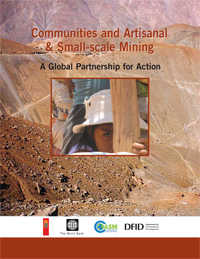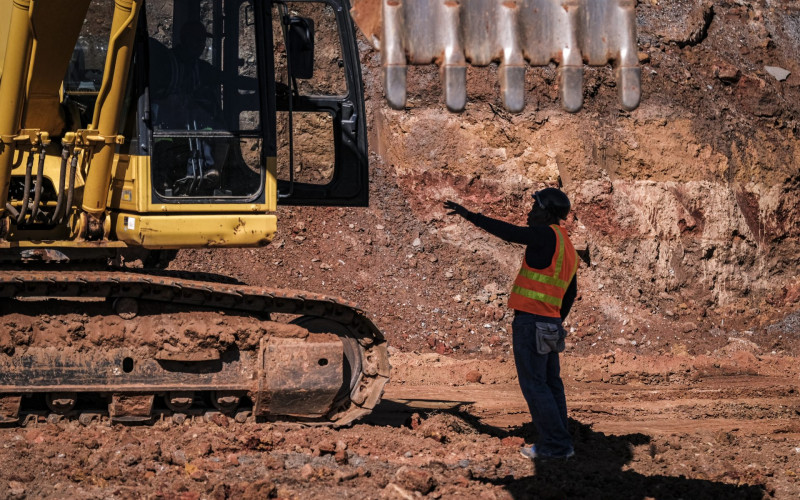Often operating in remote, unregulated and environmentally sensitive areas, difficult to tax and posing a security challenge on the verges of LSM mine sites, ASM miners are generally discussed at major mining forums as a challenge to be managed, if indeed they form part of the discussion at all. The 2012 “Investing in Africa Mining Indaba”, however, revealed a greater urgency among both government and corporate delegates to address ASM mining.
ASM activities in Africa engage about 8 million workers, who in turn support about 45 million dependents. Moreover, the number of ASM miners is growing as a result of rising commodity prices and limited economic opportunities in other sectors. In Zimbabwe, for example, artisanal diamond miners in the Marange area increased from a handful in 2004 to an estimated 35 000 in 2007. In Ghana ASM contributed 9% of total gold production in 2000, but by 2010 this had risen to 23%, with over a million Ghanaians directly dependent on ASM for their livelihoods.
It is important to recognise that the concept of ASM encompasses a wide range of mining practices. In certain areas artisanal mining has been a traditional activity for generations, and may be a seasonal enterprise to supplement agriculture-based livelihoods. In some cases significant commodity price fluctuations, mining closures or other economic shocks may lead to large numbers of ASM miners moving rapidly into an area, often with associated stresses to the environment and local communities. ASM mining may occur with various degrees of sophistication, mechanisation and legality. Some of the negative aspects of ASM mining include poor health and safety practices, child labour, pollution (for example, mercury contamination of water systems by ASM gold miners) and mining in conservation areas.
Despite the negative impacts often associated with ASM, the sector can have a variety of positive impacts. ASM is labour-intensive, offering more direct and indirect job opportunities than large-scale operations, and revenues generated can increase local purchasing power and so benefit economic activity in a range of sectors at the local level. The positive role that ASM can potentially play was explicitly recognised in the African Mining Vision 2050, which commits African countries to “harnessing the potential of ASM to improve rural livelihoods, to stimulate entrepreneurship in a socially responsible manner, to promote local and integrated national development as well as regional cooperation”.
A corporate delegate at the 2012 African Mining Indaba ascribed the difficult relationship between large mining corporations and ASM to two factors. Firstly, ASM mining is often linked with organised criminal networks and powerful local interest groups who oppose efforts by mining corporations to assist in developing and legalising ASM mining. Secondly, large mining companies fear that efforts to assist ASM miners will only lead to uncontrolled inflows of ever greater numbers of fortune seekers.
Despite these challenges, various corporate delegates recognised that successful partnerships between ASM and LSM are possible and necessary. Large mining companies can contribute to safer and more productive ASM by assisting ASM miners to form cooperatives that can access land legally, by sharing health and safety expertise and introducing new technologies. Mining corporations benefit in turn through the minimisation of security risks, managing reputational risks and contributing to a ‘social license to mine’ by maximising community development opportunities.
A variety of initiatives and resources exist which aim to support better practices in ASM mining. The Communities and Small-scale Mining (CASM) is a World Bank-led initiative that has focused on developing strategies to mitigate the environmental impacts of artisanal and small-scale mining (ASM,) developing training materials to preserve the health, safety, and environment of artisanal miners; increasing integration of awareness; and increasing implementation of “integrated policy and practice” models by international agencies and governments.
In 2010 CASM collaborated with the International Council on Mining and Metals (ICMM) as well as the IFC’s Oil, Gas and Mining Sustainable Community Development Fund (IFC CommDev) to publish Working Together – How large-scale mining can engage with artisanal and small-scale miners. The publication provides guidance on how large mining companies can manage relationships with ASM and create a secure environment for its mining activities, as well as cooperate with governments and other partners to address the challenges some forms of ASM pose such as forced labour and organised crime.
As the demand for Africa’s minerals continues to increase and large multinational mining corporations develop new mines, ASM activities and interactions between ASM and LSM are set to become increasingly common. The role of ASM in contributing to local development and addressing the social, environmental and security challenges of ASM will therefore be a key issue for both mining companies and policy makers in Africa over the coming years.
Resources on Artisanal and Small-scale Mining








